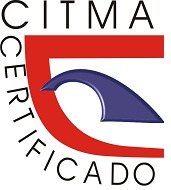Servicios meteorológicos para enfrentar la Covid-19 en Cuba: análisis de tres Casos de Estudio
Meteorological services to face Covid-19 in Cuba: analysis of three Study Cases
Keywords:
application OxyAlert_Beta; biometeorological forecasts; Covid-19 epidemic; oxygen content of the air; Sahara dust.Abstract
The paper collects some experiences derived from the application of techniques and processes of Digital Transformation, facing Covid-19 epidemic in Cuba, through the detection and forecast of meteor-tropic effects between March 11 and June 30, 2020. Three appropriate situations or Study Cases in this context are considered. They can serve as reference for confronting this dangerous pandemic in other parts of the Caribbean region and the world. The Study Cases refer to the use of the “OxyAlert_Beta” application to provide personalized biometeorological forecasts. The impact of dust clouds from the Sahara as a predisposing element for the occurrence of acute respiratory infections in the city of Santa Clara and the role of the oxygen content of the air calculated by the PronBiomet model in the occurrence of mortality associated with Covid-19 in the province of Villa Clara. In each study, the advantages and contributions of Digital Transformation techniques and procedures are described, as an essential support of meteorological services, in order to prevent and mitigate the impact of meteor-tropic effects on patients admitted to Villa Clara health centers during the first phase of the epidemic in the country.
References
Arroquia-Cuadros, B., Marqués-Mateu, Á., Sebastia, L. y Fdez-Arróyabe, P. (2020). A web-based support system for biometeorological research. Int J Biometeorol. https://doi.org/10.1007/s00484-020-01985-y
Domínguez, Nuño (9 de octubre de 2019). Premio Nobel de Medicina para los descubridores del sensor de oxígeno esencial para la vida animal. [Periódico El País, España]. Recuperado de: https://elpais.com/elpais/2019/10/07/ciencia/1570432506_098731.html.
Drumond, B., Angelo, J., Xavier, D.R., Catao, R., Gurgel, H. y Barcellos, C. (2020). Dengue spatiotemporal dynamics in the Federal District, Brazil: occurrence and permanence of epidemics. Ciencia y Salud Colectiva, 25(5); 1641-1652. https://doi.org/10.1590/1413-81232020255.32952019.
Estrada, A., Moya, A., Lecha, L. y Ciómina, E. (2007). Los pronósticos biometeorológicos: una vía para reducir las crisis de salud en la población cubana. En: Memorias del IV Congreso Cubano Meteorología, La Habana, diciembre 4-8.
Fdez-Arróyabe, P., Lecha, L. y Ciómina, E. (2008). Development of an international teamwork of biometeorological forecast testers for the validation of PronBiomet health warning system: an applied study. En: Resúmenes del XVIII Congreso de la Soc. Int. Biometeorol., Tokio, Japón, Hum1-O14.
Fdez-Arróyabe, P., Lecha, L. y Schmidt, F. (2015). Desarrollo de servicios climáticos orientados hacia la salud pública, basados en aplicaciones móviles: OxyAlert. En: Análisis espacial y representación geográfica: innovación y aplicación; 591:599. Universidad de Zaragoza-AGE. ISBN: 978-84-92522-95-8.
GFS - Global Forecast System (2020). National Centers for Environmental Information, NOAA. Recuperado de: https://www.ncdc.noaa.gov/data-access/model-data/model-datasets/global-forcast-system-gfs.
Haltiner, G.J. y Martin, F.L. (1968). Dynamical and Physical Meteorology. Ed. Academia, La Habana; 470 pp.
Lecha, L. (2018). Biometeorological forecasts for health surveillance and prevention of meteor-tropic effects. Int. Jour. Biomet., 62, 5; 741-771. https://doi.org/10.1007/s00484-017-1405-2/.
Lecha, L. (2019). Pronósticos Biometeorológicos [eBook]. Ed. Citmatel, La Habana; 210 p. ISBN 978-959-237-752-3.
Lecha, L. y Delgado, T. (1996). On a regional health watch and warning system. En: Proceedings of the 14th Int. Congress of Biometeorology, Ljubljana, Slovenia, 2, 3; 94-107.
Lecha, L., Fdez-Arróyabe, P., Ciómina, E. y De la Vega, T. (2010). Validación del servicio global de pronósticos biometeorológicos. Resultados de Cuba y España. En: Salud y Desastres: experiencias cubanas, Vol II. Ed. Ciencias Médicas, La Habana; 35-45.
Lecha, L., Meulenert, A. y García, O. (2013): Validación del servicio de pronósticos biometeorológicos en el estado de Jalisco, México. Parte 1: el modelo numérico y sus características. En: Memorias del XXII Congreso de la Organización Mexicana de Meteorología A.C. y VII Congreso Internacional de Meteorología, Veracruz, Jalisco, México; 22 pp.
Meteoblue (2020). Influence of weather on Corona-Virus infections. Meteoblue study Corona-weather 20200320v102.odt; 17 p. https://content.meteoblue.com/es/content/view/full/6335, consultado el 13 de octubre de 2020.
Meteored (2020). Reseña histórica de los modelos de predicción numérica en América. Disponible en: www.meteored.mx/noticias/divulgacion/modelos-de-prediccion-numerica-y-su-uso-en-la-meteorologia.html, consultado el 13 de octubre de 2020.
Moriyama, M., Hugentobler, W.J. y Iwasaki, A. (2020). Seasonality of respiratory viral infections. Annu Rev Virol, 7; 2.1-2.19. https://doi.org/10.1146/annu-rev-virology-012420-022445.
Ovcharova, V.F. (1981). Cálculo del contenido de oxígeno en el aire sobre la base de parámetros meteorológicos (presión, temperatura y humedad) para el pronóstico de los efectos de las condiciones de hipoxia [en ruso]. Prob. Climatoterapia, fisioterapia y rehabilitación, 2; 29-34.
Roach, J. (2020). How altitude relates to prevalence and impacts of Covid-19. Accuweather, texto publicado en https://www.accuweather.com/en/weather-news/coronavirus-daily-briefing-updates-june-28-29/768850.
Downloads
Published
How to Cite
Issue
Section
License
Copyright (c) 2020 Luis Lecha Estela

This work is licensed under a Creative Commons Attribution-NonCommercial 4.0 International License.













